Interview: Becky Crew
Australian science writer and author of “Zombie Birds, Astronaut Fish and Other Weird Animals”

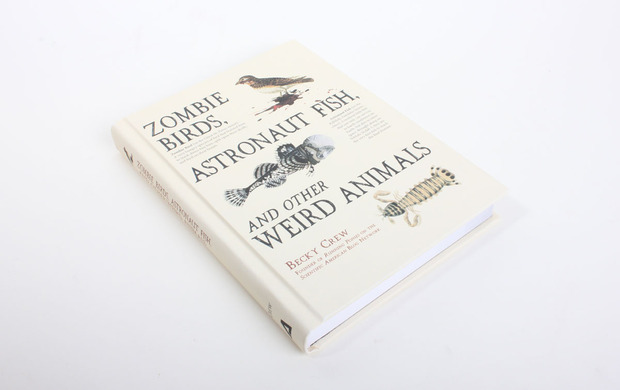
Becky Crew spent her childhood in the picturesque Blue Mountains in Australia, with her (human) family and a menagerie that included dogs, cats, pigeons, crabs and all kinds of critters. Suffice to say she has always had a bit of a fascination with living creatures.
While she didnt love science class in school, and then worked in finance, she and a friend started the animal-focused blog Running Ponies. This led to Crew being awarded Australian Science Blogger of the Year in 2010, being named Online Editor of COSMOS, and being added to the Scientific American blog network. And now, her first book, “Zombie Birds, Astronaut Fish and Other Weird Animals” (or “Zombie Tits, Astronaut Fish and Other Weird Animals,” as it’s named in slightly-more-crass Australia) has just been released in the US.
The book explores the strange and mysterious animal world in a way that perfectly balances information and entertainment. Its not desperately trying to be educational, it just is. Crew splices incredible facts about creepy-crawlies and oddball creatures with sometimes dark, sometimes sweet, always humorous anthropomorphic narrativeslike the Swima Worm who cant ever get through airport security with its eight bomb-like appendages, or the Palpimanus Gibbulus spider who is embarrassed about his cannibalistic desires when ordering at a restaurant.
Curious about her creative take on science, we asked Crew to share a little about her interest in the animal world.
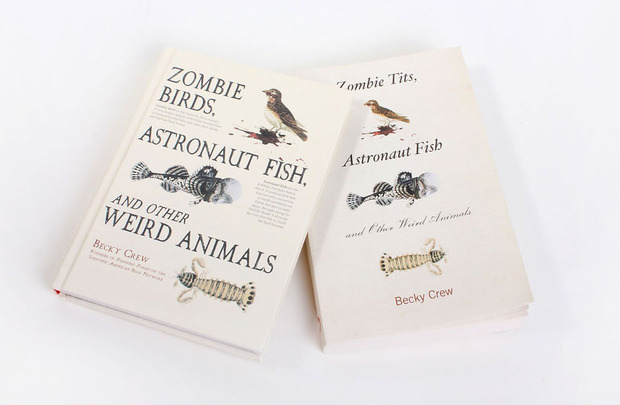
The book’s title was changed for American audiences, did you mind?
It doesnt have the same ring to it, but I trust the American publishers decision to change it. Its my first book, and I certainly wasnt expecting it to ever make it to the US market, so Im just grateful that they took a chance on me! Its also handy for when I meet elderly people who I dont want to offend, because I usually end up telling them its called “Zombie Tits (as in the birds!), Astronaut Fish and Other Weird Animals.”
You seem to have always been interested in the animal world. Can you tell us a little about your backgroundyour education and interests when you were younger?
Ive always loved dinosaurs and animals. I was one of those kids who would habitually arrange one million plastic dinosaurs around the rim of the bathtub and sometimes make them fight in the shower. I knew all their scientific names. I also collected pets. We had cats and guinea pigs and rabbits and fish and rats and hermit crabs and axolotls. Id collect lizards and put 40 of them in an ice cream container before letting them go again because it was sort of ghastly. I found a pigeon at my dads work, dusted it with flea powder and took it home. It would fly home every night for dinner for about two weeks straight before my cat killed it.
Did you maintain your interest through adolescence?
As a teenagerbesides hating everything except for Bad Religion and dogsI focused on my English subjects because Ive also always loved writing. I read a book called “Naturalist,” an autobiography by the controversial, but endearingly old and southern ant expert, E. O. Wilson, and told my English teacher I wanted to write non-fiction books when I grew up. He was sort of bemused by that because I wrote so much fiction, and I dont think I was being serious, but its nice to pretend that I had it all figured out when I was 17 years old.
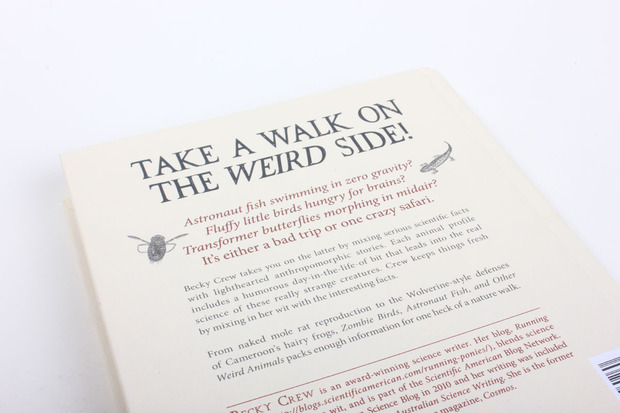
The book is perfectly balanced: part entertainment and part education. Was there part of you that wanted to prove that science is actually really fun?
I think its less about proving that science is cool and more about making it accessible. You wouldnt put a Texas horned lizard down in front of someone, watch it spit poison blood out of its eyes and then list the reasons why this is one of the coolest things theyll ever see. My job as a science communicator is to put that lizard in front of as many people as possible, and then explain how it made its own blood poisonous and why it spits it out of its eye sockets. A huge part of making science accessible is making it entertaining, to make someone laugh and then come out of it feeling just a little bit smarter. It shouldnt be a chore to read about science. Pretty much any concept in science can be explained to a person with a casual interest in it if the communicator is really good at what they do.
Was there anything you specificallyperhaps personallywanted to achieve with the book?
I think for most people, you either love science, or you love science but dont know it yet. If youd asked me in high school if I loved science I would have said, Cell biology and slicing rats open? No.” because I only knew it from what I was exposed to through the high school curriculum. So a lot of what influences me in science writing is the desire to bring good, relatable science to as many people as possible, especially young people who love animals but dont know they love science yet. So I wanted “Zombie Birds” to be an engaging book for both to the scientific community and your mums friends teenage son whos impossible to buy for, because hopefully it will lead to him become that scientist who discovers a new species of amphibious swamp cat in the Congo or something.
Is science male-dominated? Do you feel like you have an advantage or disadvantage being a young woman in the fieldor is it the same as any other?
Things in science communication are very different [from actual scientists]. I love that blogs and online writing has really levelled the playing fieldit doesnt matter what you are or how old you are, as long as youve got the passion and are willing to put the hours (lots of hours) in and be a little different. Of course, there are still a few people who, subconsciously or not, hold on to the belief that science is a mans game. Recently the founder of a very popular science Facebook site mentioned she that was a young woman, and some of her followers were very vocal about how shocked they were about that. Ive never experienced anything that extreme, but people have referred to me as a male before reading my byline and at my former job at COSMOS, an Australian science magazine where the majority of staff was always female, Id still get emails addressed to “Dear Sirs.” I dont think its something that will stick around for much longer, there are so many amazing female science communicators right now.
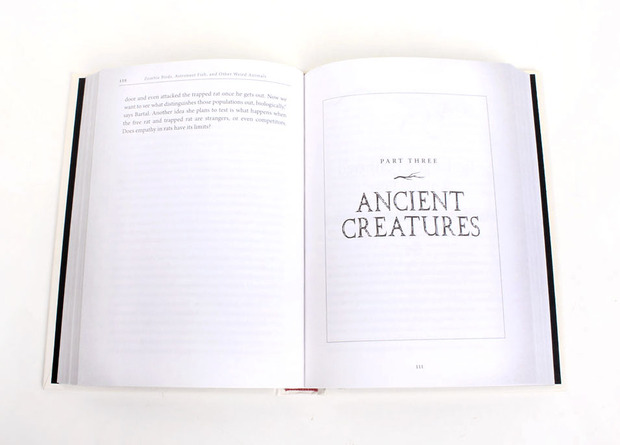
Do you have a favorite animal?
I have two favorite animals for very different reasons. Dogs are my favorite because theyre the greatest animals in the world and if you dont get that, theres something wrong with you.
And the other?
My other favorite animal is the naked mole rat, because I have so much respect for how weird its managed to be. Along with the African Damaraland mole rat, naked mole rats are the only eusocial mammals in the world, which means they live in huge, insect-like colonies underground, with a single queen. The queen is huge, and she intimidates all the other females into becoming reproductively stunted, so no one can produce offspring except for her. They have weird, misshapen sperm (the heads are all mangled and the DNA isnt packaged properly inside) and its the slowest moving sperm of any animal; only 7% of it actually moves (in humans its about 60%). But they dont seem to have much trouble producing healthy babies! Plus theyre completely blind; feel no pain on their skin, including if you burn them with acid; they breathe in nothing but toxic air overloaded with carbon dioxide; and theyre immune to cancerscientists literally inject cancer cells into them and it doesnt take hold. And, you know, they look like raw sausages with teeth.
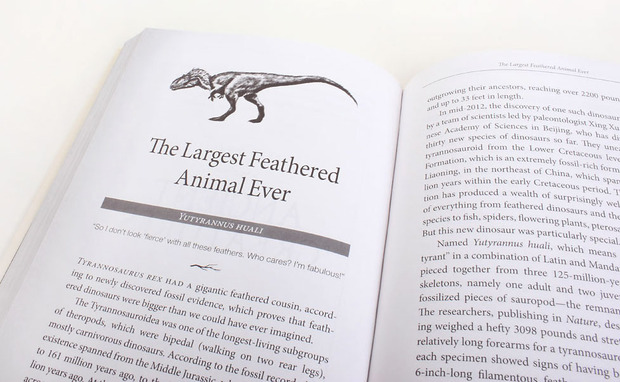
Species are being discovered all the time; do you have any predictions?
I think weve discovered something like 5% of the ocean so far, so I cannot wait to find out whats down there when weve built better submersible vessels. There will probably be a goblin shark that does that thing where it has a hidden jaw inside its jaw except theyll be something like five jaws hidden within jaws and theyll have whorls of renewable teeth that are disposed of inside the lower jaw like the prehistoric ghost shark, Helicoprion.
The way technology is going, were also going to find smaller and smaller animals. Last month, Canadian scientists found a new species of fairyfly, Tinkerbella nana, in Costa Rica. Its 250 m micrometres longso a quarter of a millimetre. Its invisible to the naked eye, but its a fully-formed, gorgeous-looking insect. And its not even the smallest insect ever found! The smallest insect is the blind, wingless parasitic wasp, Dicopomorpha echmepterygis, which is just 139 micrometres long. Its mind-boggling.
Pick up a copy of “Zombie Birds, Astronaut Fish and Other Weird Animals” at Amazon for $12.
Images by Graham Hiemstra












